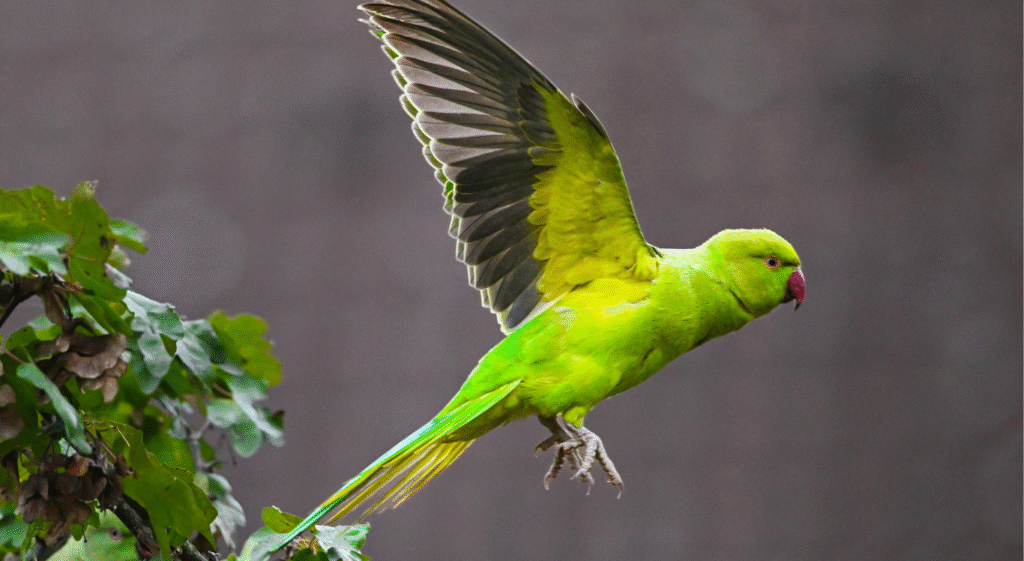The turquoise Indian ringneck is one of the most eye-catching parrot varieties, admired for its stunning color and graceful personality. This bird is a mutation of the Indian ringneck parakeet, with its feathers showing shades of turquoise blue and green that shimmer beautifully in the light. The contrast between the soft turquoise body and the dark ring around the male’s neck makes this parrot stand out among other pet birds.
Beyond its looks, the turquoise Indian ringneck has a unique charm. Its sleek feathers, slender body, and expressive eyes give it a refined appearance. For many bird enthusiasts, simply watching this parrot perched in its cage or gliding around the room is a source of joy. Its beauty makes it popular among breeders and pet owners alike, often making it the highlight of any bird collection.
The turquoise mutation does not affect the bird’s health or temperament, which means owners get all the visual appeal without any added challenges. With proper care, these parrots can live for 20–30 years, making them long-term companions for families who value both beauty and personality in a pet.
Personality and Behavior of Turquoise Indian Ringnecks
While the turquoise Indian ringneck is known for its striking feathers, its personality is equally captivating. These parrots are intelligent, playful, and curious by nature. They love to explore their surroundings, chew on toys, and interact with their human companions. Their high level of intelligence means they can quickly pick up routines and even mimic words or short phrases if trained consistently.
Ringnecks, including the turquoise variety, are often described as independent birds. They enjoy spending time with their owners but also like having their own space. This independence makes them slightly different from parrots like cockatoos, which crave constant attention. With ringnecks, building trust and bonding takes patience, but once formed, the relationship is deeply rewarding.
These birds can sometimes go through a bluffing stage, usually during adolescence, where they may nip or act moody. However, with gentle handling and positive reinforcement, they outgrow this phase. Owners who invest time in socializing and training their turquoise Indian ringneck often find themselves rewarded with a loyal and engaging companion who enjoys being part of the household.
Caring for a Turquoise Indian Ringneck
Owning a turquoise Indian ringneck comes with responsibilities that ensure the bird stays healthy and happy. A proper cage is essential, with enough room for the parrot to spread its wings and move freely. Since these birds are active, adding perches, swings, and chewable toys helps keep them engaged and prevents boredom. Regular out-of-cage time is also important for exercise and bonding.
A balanced diet is another key part of care. While seeds are often given to parrots, a turquoise Indian ringneck needs a varied diet that includes pellets, fresh fruits, and vegetables. Foods like leafy greens, carrots, apples, and berries provide essential nutrients that keep the feathers vibrant and the bird energetic. Avoid feeding them avocado, chocolate, caffeine, or salty snacks, as these can be harmful.
Regular interaction is necessary to maintain a strong bond. Owners should spend time talking to, training, or simply sitting near their bird each day. Grooming routines, such as nail trimming and providing baths or misting, also contribute to the parrot’s well-being. With good care, these birds thrive and reward their owners with companionship that can last for decades.
Training and Socializing Your Ringneck
The turquoise Indian ringneck is highly trainable thanks to its intelligence and curiosity. Training sessions should be short, fun, and consistent. Many owners start with simple tricks like stepping onto a hand or perch before progressing to speech training. With patience, these parrots can learn to say words clearly and even mimic household sounds.
Positive reinforcement works best for training. Offering small treats, like sunflower seeds or fruit pieces, encourages the bird to repeat good behavior. Harsh discipline should be avoided, as it can harm the trust between the bird and owner. Instead, calm and steady interaction helps build a positive relationship.
Socializing is equally important. Turquoise Indian ringnecks benefit from exposure to different people, environments, and routines. This reduces the chance of them becoming overly shy or territorial. Families with children should supervise interactions to ensure both the bird and the child remain safe and respectful. A well-socialized turquoise Indian ringneck often becomes a confident, engaging pet who enjoys being part of everyday life.
FAQs About Turquoise Indian Ringnecks
Q: How long do turquoise Indian ringnecks live?
A: With good care, they can live 20–30 years, sometimes even longer.
Q: Can turquoise Indian ringnecks talk?
A: Yes, they are known for their ability to mimic words and short phrases when trained.
Q: Are they good for first-time bird owners?
A: They can be, but they require patience, regular interaction, and proper training.
Q: What size cage do they need?
A: A large cage with enough room to stretch wings and climb is ideal, along with toys and perches.
Q: What should I feed my turquoise Indian ringneck?
A: A balanced diet of pellets, fresh fruits, and vegetables, along with occasional seeds as treats.



